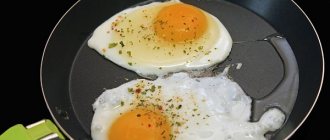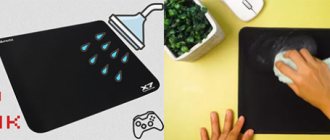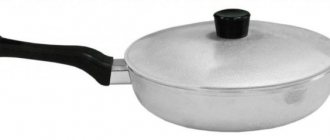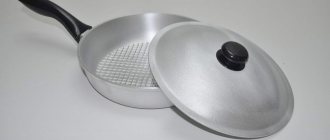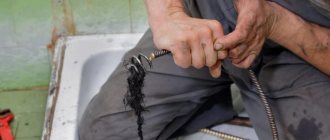Why clean your curling iron?
To strengthen their hair, women rub in oils. To ensure that the hairstyle lasts longer and the curls do not fall apart, use foam and varnish. All these funds settle on the device.
Uneven heating of the plates
When you turn on the iron, the temperature increases, under the influence of which accumulated residues of cosmetics and medicinal oils stick to the surface of the plates. If hair that is not very clean is straightened, sebum remains on the curling iron. The resulting sticky layer:
- prevents uniform heating of the plates;
- negatively affects the condition of the hair;
- reduces the effect of the procedure.
Over time, the strands begin to fall off. To prevent this from happening, you need to clean the curling iron from plaque.
Damage to the work surface
Sticky particles of varnish, fat, foam worsen the appearance of the device and make it untidy. Carbon deposits that form on the parts of the device lead to damage to its surface.
No effect from leveling
A curling iron coated with plaque begins to work worse because the plates heat up unevenly. In some areas, the temperature is lower than normal, and curly curls are poorly aligned, do not acquire a beautiful shine, but, on the contrary, become dull because they become dirty from the surface of the iron, which is covered with a greasy coating.
Overheating and split ends
Since the effect of hair straightening is reduced, it takes longer to expose the strands to high temperatures, which negatively affects the condition of the ends. They begin to peel off and split heavily.
How to clean your iron from dirt, scale, carbon deposits | REDMOND brand store blog
- If the straightener is used for styling every day, then you need to remove plaque from its surface every time before processing clean hair. Otherwise, the curls will only get dirty after contact with the plates, which will damage their appearance and health.
- If you use the iron no more than twice a week, you are allowed to clean it once every two months. But at the same time, you need to monitor the actual condition of the device; if plaque accumulates faster, then it must be removed as it appears.
The desire to clean the comb of hair and dirt should be a priority, along with washing and brushing your teeth. After all, combing with a dirty brush harms your hair. Just washed your hair and then used an unwashed accessory? Wasted time. Your hair will look untidy. But this is not the worst thing.
Basic cleaning methods
There are several options to help deal with carbon deposits on the ironing plates and remove plaque.
Simple method
Cleaning a V-shaped curling iron is not so easy, but it can still be done. First, you need to warm up the device a little and unplug the cord from the outlet, and then get to work:
- A piece of terry cloth or a cotton swab should be soaked in warm water, wrapped around your finger and the plate should be cleaned of plaque.
- After rinsing the towel, you need to wipe the body of the iron and wait until it dries or dry it.
- To make the curling iron less dirty, after each straightening of the curls the device is moistened with water and the plates are cleaned of carbon deposits with alcohol.
They remove plaque from all parts of the device, although it is inconvenient to get to them.
Do not remove carbon deposits with your fingernails or a blade, as the surface of the straightener can be easily scratched.
Removing stubborn stains
Clean the curling iron from stuck mousse, foam, and varnish by wiping the body and each element of the iron with napkins containing alcohol. You can get rid of a thick layer of plaque by wetting the device with a soap solution. There is no need to put in much effort, as the paint will peel off easily.
Ceramic coating
Many women try to scrub away carbon deposits on their curling irons with cleaning products that scratch the surface of the hair straightener. Ironing plates are made not only of metal, but also of ceramics. The device should not be wiped with abrasive powders, but with a cloth soaked in heated water or soap solution.
Effective methods for cleaning your iron at home
To quickly clean your iron, you can seek help from the popular collection of tips, which offers many cleaning options. Moreover, all these methods are based on the use of improvised means available in every home.
Whatever cleaning method is chosen, it must match the material of the sole. In the case of a ceramic coating, it is desirable that the mechanical impact be minimized, and the carbon deposits must first be melted and dissolved.
Prohibited:
Scrape carbon deposits from the sole with a knife or wire brush.
Rub the coating with sandpaper.
Use abrasive substances.
The following products will help you effectively clean ceramic soles:
Cleaning Pencil
For a ceramic surface, you should buy a pencil based on ammonia. The cleaning procedure is as follows:
1. The iron is heated to maximum temperature and unplugged.
2. Install the device in a vertical or slightly inclined position.
3. Use a pencil to treat the surface of the sole. Under the influence of temperature, it will begin to melt and flow together with the dirt.
4. Remove any remaining melted pencil and carbon deposits with a clean, dry cloth.
Household chemicals for cleaning glass-ceramic surfaces
This option is suitable for those who have a glass-ceramic hob installed in their kitchen. They already have products for caring for such a surface - these can be used to clean the ceramic soleplate of the iron.
They do this: apply a product from the arsenal of household chemicals for glass ceramics to the cold surface of the device. Leave the substance to act for 5–10 minutes, after which the dirt is collected and the sole is polished with a dry soft cloth.
Vinegar and ammonia
These two components do an excellent job of removing carbon deposits, both together and separately. If you plan to clean the iron with vinegar, then the device is heated to maximum temperature, but when using ammonia, it is heated slightly. In both cases, after heating, the iron is turned off from the network. Then soak a thick cloth in the selected substance and wipe the sole.
To make a solution, take these 2 substances, ammonia and acetic acid, in equal proportions, mix. Then proceed like this:
1. Moisten a sponge in the resulting composition and apply it to a cold surface. 2. Heat up the iron. 3. Take a clean cotton cloth, moisten it in a solution, and spread it on the surface. 4. Iron this fabric several times with a heated iron.
Hydrogen peroxide
The warm sole of the iron, already unplugged, is wiped with a cotton swab dipped in a solution of hydrogen peroxide. Repeat the procedure several times until the carbon deposits peel off.
Toothpaste
Using toothpaste, you can quickly and easily clean the soleplate of your iron. To do this, you need to warm up the device and turn it off. Take a sponge or an old toothbrush and apply an even, thin layer of paste to the surface to be treated. Wait for the substance to dry, then remove any remaining paste with a soft, dry cloth.
Toilet soap
This method is good when you have just placed a stain and decided to get rid of it immediately. This technique will not work with old stains.
What do we have to do:
- Wait until the soleplate of the iron cools down a little.
- Take soap and rub it on the damaged surface.
- Leave the device for 30 minutes.
- Use a damp soft cloth to remove any remaining soap and dirt.
- Polish the surface with a dry cloth.
Nail polish remover
A solution containing acetone will do an excellent job of removing stains such as pieces of burnt synthetics and polyethylene. The cleaning method is simple: heat the iron slightly and turn it off. Soak a cotton swab in nail polish remover and rub the stained area. The stain will disappear right before your eyes.
Matchbox
An unusual, but quite effective method. It is better to take a new matchbox, since we will need a dark side. This is where sulfur is found, which perfectly corrodes dirt.
Cleaning method:
1. Preheat the iron and turn it off. 2.Rub the carbon deposits with the dark side of the matchbox. 3.As soon as the stains come off, remove any remaining dirt with a damp soft cloth.
How not to do it
If you straighten dirty hair, greasy deposits quickly accumulate on the iron plates. Before the procedure, you must wash your hair. Wet curls cannot be straightened or curled, just as it is forbidden to use a wet iron.
It is dangerous to clean the appliance when it is not unplugged, as this may cause a short circuit. Abrasive products scratch the ceramic coating of the curling iron; under no circumstances should you remove carbon deposits with your fingernails, a knife or a blade.
The device must be heated to a certain temperature. It is recommended to straighten brittle and dry strands at 120–140 °C. To work with coarse and thick curls, the device can be heated to 200–220 °C.
Increasing the maximum parameters negatively affects the hair structure, split ends, strands become brittle and dull.
Rules of care and use
Women who not only dream of looking stunning, always having a stylish hairstyle, but also maintaining shine and health in their curls are advised to purchase a more expensive straightener with ceramic coating. The heat in such a straightener evenly enters the plate, protecting the hair from overheating.
In a device made entirely of metal, the temperature rises unevenly, and it is easy to burn out the curls, and it is much more difficult to restore them. Before plugging the iron into a socket, you need to check whether the insulation and parts of the device are damaged. To prevent a short circuit, if the first If there are any signs of a dangerous phenomenon, the curling iron cord must be unplugged.
Do not straighten or twist wet strands; if the insulation is broken, you may receive an electric shock. And even if this does not happen, the hair structure suffers.
Dirty hair contains a lot of sebum and contains remnants of cosmetics and care products. These particles stick to the surface of the plates, melt, forming carbon deposits, which are difficult to deal with. It is necessary to select the temperature regime for straightening curls, taking into account the thickness and density of the hair.
The contaminated surface must be cleaned after turning off the device with a cloth soaked in warm, but not hot or cold water. Do not pry the coating on the iron with sharp objects, or rub the surface of the curling iron with abrasive powders or hard sponges.
To avoid overheating your hair, you should not hold the iron on the strands for a long time. For damaged, weak curls, it is worth choosing a gentle regime.
Source of the article: https://hozzi.ru/chistka/utyuzhok-dlya-volos
Why is cleaning necessary?
Before using a straightener, we often apply hairspray, foam, oils and other care products to our hair.
When hot plates slide over curls, residues of these products accumulate on them. Under the influence of high temperature, they literally stick to the surface of the iron. Also, sebum remains on it if you use the device not only after washing your hair. Over time, the sticky layer grows, making the coating on the build plates uneven. It is necessary to clean it to maintain the health of the curls, as well as to extend the life of the straightener. If this is not done, the following negative consequences are possible:
- uneven heating of the plates;
- damage to the working surface;
- lack of effect from leveling;
- overheating and split ends.
Cleaning methods
The method for cleaning the device depends on the degree of contamination. If you straighten only clean hair without using styling or protective products, the task will be much easier. If cosmetic residues have stuck to the surface, you will have to use more effective methods.
Simple method
To clean the hair straightener, we need a microfiber or a thin terry towel; they must be clean. You also need to prepare cotton sponges and ear buds, warm water (in no case cold or hot). Next we proceed according to this scheme:
- Plug in the device and heat the plate until warm. They should not be hot, otherwise there is a risk of getting burned, and it is simply impossible to remove dirt from a cold surface.
- Disconnect the rectifier from the mains, keeping the plug away from water.
- We wet the towel, wring it out well, wrap it around our fingers and smoothly walk over the plates. It is very important not to scrape or rub off the carbon deposits with your fingernails or improvised means, as this can damage the coating of the iron.
- To clean hard-to-reach places, use cotton sponges or swabs.
- After removing dirt from the working surface, we move on to the body. It must be cleaned, especially if you use the iron not only for straightening, but also for creating curls.
After processing, wait until the iron is completely dry. To speed up the process, you can blot it with a clean towel.
Removing stubborn stains
How to clean hair straighteners from hairspray, mousse, oils and other cosmetics?
It is more difficult to wash the coating from such contaminants, but it is quite possible. To make your task easier, after each use of the device, treat the work surfaces and body with alcohol-containing wet wipes or a dry paper towel. If the plaque layer is large, use a solution of warm water and liquid soap. You can use rubbing alcohol instead of detergent.
However, keep in mind that its concentration should be low, otherwise there is a risk that the paint will peel off the rectifier body. After removing dirt, be sure to go over the iron with a damp, clean towel to remove any remaining product.
Prevention measures
In order for your hair straightener to last as long as possible, you must adhere to the following rules.
- When cleaning a straightener, you need to start with the most gentle means, and only after making sure that they are ineffective, move on to the most powerful ones.
- After each use, the device must be wiped with a cloth soaked in clean water. Such a simple procedure will eliminate the accumulation of plaque deposits and, as a result, many problems in the future.
- You cannot use a straightener with dirty hair; you must first wash your hair.
- After cleaning, the iron must be dried thoroughly and only then used again.
- You cannot wipe ceramics with hard paper - it can be scratched. The most you can afford is a paper towel.
- For very severe stains, a melamine sponge will help, however, do not get carried away with it after each use.
How often should I clean the device?
The more often you remove plaque from the plates, the better for your hair and the device itself. Stylists recommend cleaning your flat iron once a week if you use it every day without additional cosmetics. In the case of treating curls with varnish, foam and other stylers, the plaque must be washed off after every second use.
Remember that even heat protectants remain on the surface of the straightener. And if you cannot see them, you should not ignore the rules for caring for the device.
General recommendations
Before cleaning the soleplate of a household appliance, you should familiarize yourself with the basic rules for cleaning and, in general, handling the iron. Since the goal is not just to clean the dirty coating, but also to keep it intact and unharmed, under no circumstances should you use rough, abrasive products; ceramics do not tolerate this. This is the most important rule. Besides:
- Do not press too hard on the sole - it may crack.
- You cannot clean a hot iron - first you need to turn it off from the power supply and allow the device to cool, unless the instructions indicate that you need to clean the hot soleplate.
- You should not start ironing immediately after cleaning, as this can have a negative impact on both the device and things.
Next, you should decide which means are more suitable for you - professional or folk.
Stylist tips
Experts recommend caring for your straightener regularly to avoid causing a negative impact on your curls.
It is worth considering that the ceramic, tourmaline or titanium coating of the plates is quite fragile. It deteriorates from strong pressure, concentrated detergents and abrasives. You need to wash the device by following these simple tips:
- Do not use sponges with a rough surface, scrapers or other equipment that can scratch the plates.
- Never use dry detergents or chemicals intended for cleaning other surfaces. It may damage the plate coating.
- There is no need to wash off dirt with force. This may compromise the integrity of the iron's coating.
- When removing burning and plaque, use only clean towels and napkins. Change them when they become dirty.
- You will not be able to avoid the appearance of plaque if you use the device at a low heating temperature. In this case, it lingers on the strands longer, so the stylers have every chance of contaminating the plates.
- Never use the iron if it is not dry. This leads to overheating and damage to the hair.
- Hair can deteriorate not only from carbon deposits accumulated on the plates, but also from non-compliance with straightening technology. Before using the device, be sure to comb your hair, otherwise it will get tangled and dry out in certain areas.
If you have very persistent stains, you should contact your hairdresser for help. Ask him to treat the device with a special solution. Professional products remove all types of plaque without damaging the coating of the plates.
Cleaning carbon deposits at home
When choosing a pencil for cleaning a ceramic iron, make sure that the main component of the product is ammonia or acid. The ceramic sole must be cleaned with a pencil very carefully.
Carelessness can lead to scratches on the coating, which will impair ironing and subsequent surface care. The pencil is very easy to use:
The pencil is very easy to use:
- turn on the iron and wait until the soleplate heats up;
- carefully move the pencil over the ceramic coating, pressing lightly in places where the contamination is significant;
- unplug the iron and wait until it cools down;
- Wipe the ceramic coating with a damp soft cloth or napkin.
By choosing a glass ceramic cleaning product, it will be easy to remove dirt from the sole. Apply the product to the ceramic surface of the iron in the amount specified in the instructions for the cleaning composition. Wait 3-5 minutes and polish the surface with a cloth. Such products will help remove dirt from the soleplate of the iron and clean the glass-ceramic stove, if you have such cooking equipment in your household.
Table vinegar also effectively copes with stains on ceramic soles. Set the iron to the maximum temperature, wait until it heats up and disconnect the device from the power supply. Dip a soft cloth in vinegar and rub the dirty areas of the sole.
Having chosen hydrogen peroxide for cleaning, you will additionally need a piece of linen cloth.
- Set the appropriate mode for ironing linen and turn on the iron.
- While the ceramic soleplate is heating, generously soak a linen cloth in peroxide and place it on the ironing surface.
- Iron the linen to remove dirt from the sole. When the fabric dries, re-wet it in peroxide and continue ironing until the dirt is completely removed.
- After cleaning the ceramic surface, take cotton swabs and soak them in peroxide to remove dirt from the steam holes.
At home, the easiest folk remedy to find is toothpaste, but do not use a hygiene product with a whitening effect to clean your ceramic-coated iron. Make the sole warm, but not hot, and apply the paste. When it dries, use a soft cloth to remove any deposits that have formed.
Any carbon deposits that appear can be cleaned immediately using laundry soap. Rub the warm ceramic coating of the iron with soap and after 25-30 minutes, clean the deposits with a damp cloth. Cotton swabs will help remove dirt in the steam holes.
When using ammonia as a cleaning agent, ensure that the room is well ventilated. Set the iron to the minimum temperature, turn it on and wait for it to heat up, unplug the device from the outlet. Wet a cloth with ammonia and treat the ceramic sole. After waiting 2-3 minutes, dip the rag again in ammonia and rub the dirty areas of the iron’s ceramic coating.
Precautionary measures
Since the rectifier is an electrical appliance, precautions should be taken when cleaning it.
This will protect you and your loved ones from injury. Follow these rules:
- Under no circumstances should you begin cleaning the iron unless it is unplugged.
- Clean away from children and pets. Especially during heating.
- Do not immerse the device in cleaning solution. This is life-threatening and can completely damage the rectifier.
- Do not plug a wet iron into a power outlet.
